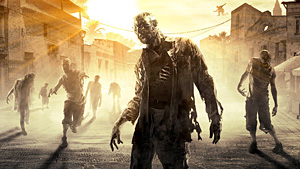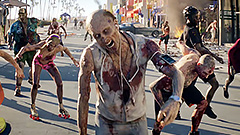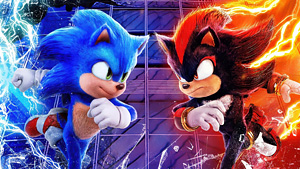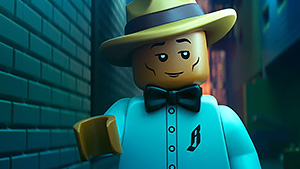February 24, 2015 by Paul Curtin

With so many other triple-A games hogging the recent next-gen (now current-gen) spotlight, Dying Light could easily be overlooked as just another ordinary open world game with zombies… and on the surface, that’s exactly what it is… the next installment in the over-saturated zombie survival horror/action genre from the same team that already brought you Dead Island in 2011.
From its generic intro cinematic to its faux-gameplay opening scene, Techland’s latest does little from the start to set itself apart from the herd. Even as you watch the Global Relief Effort’s secret agent, Kyle Crane, skydive down into the visually stunning city of Harran, you can’t help but feel a bit of deja vu and draw comparisons to other open world games like Crysis and Far Cry.
As Crane, players assume the role of a generic and predictable undercover operative sent to infiltrate the quarantine zone of Harran with the mission to find Kadir “Rais” Suleiman, a political figure gone rogue warlord. Like Far Cry, lead character Crane’s dialog doesn’t feel relatable or based on any sort of rational emotions that a real person in his position would have, and it’s instead the supporting characters and villain, Rais, who do most of the heavy lifting throughout the games enjoyable campaign.

But imitation isn’t always a bad thing and like most great open world games that have so much going on from the start, Dying Light requires patience from the player as it slowly develops the city, characters, story, and each of its other copycat traits into something special that’s more than just the sum of its parts.
After dropping into Harran, it becomes apparent that surviving the zombie-infested streets is not going to be an easy task for Crane. What Crane lacks in personality is nothing compared to his lack of inventory. Weapons are scarce, and even the rare ones you do find can easily break and become useless after too many brutally devastating melee hits and slices through zombies.
When night hits, zombies evolve into a crazed state, and more powerful hunters appear that force players to creep by them to avoid their vision cones. Trying to survive the night to generate double experience usually results in a quick death at early stages in the game and requires a bit of luck when making a daring sprint to a safe zone — hence the game’s tagline “Good Night, Good Luck.” because you’re going to need it when alone in the dark and left for dead.

It’s this struggle to survive and need to scavenge new items, build greater ones, and level up Crane’s abilities that help drive exploration throughout the city of Harran. But this struggle combined with a lack of true motivation can easily become a breaking point for many gamers that are looking for a thrilling experience right away. It’s not until a couple hours in that everything really starts to click and Dying Light as a whole becomes so addicting.
Once getting the hang of the unique free-running controls to quickly traverse rooftops and gaps, picking locks to discover new rare items, and racing to airdrop locations to have epic close-quarters combat battles with other bands of survivors over said rare items, Dying Light starts to become a satisfying experience on a level that even the games it’s taken inspiration from haven’t ever been able to achieve.
Every square inch of the Harran is filled with an absurd level of detail, and new missions, objectives, and challenges are easily found around every corner. Almost everything you do in Dying Light also goes towards generating experience that levels up Crane’s abilities and eventually unlocks new items. So you never feel like you’re wasting time, and every activity no matter how big or small always feels rewarding.

Dying Light also features an amazing 4-player co-op system that instantly makes gameplay more enjoyable with friends and others who have a mic to communicate. Players can jump in and out of one another’s games without skipping a beat, and working together seamlessly to hop from one exciting adventure to the next with no real delays is one of, if not the best, open world co-op experiences ever.
Not only can four players band together to take on the entire story from beginning to end, but Dying Light also features a competitive zombie invasion mode that allows a fifth player to hop in as special zombie class and challenge the human players. Having another enemy invade causes the story’s main objective to be put on hold, but players can easily specify in the menu the rate at which they would like invasions to occur and even turn it off completely if they don’t want to be bothered. “Be the Zombie” mode’s 4v1 works surprisingly well and even steals a bit of thunder from the more highly anticipated upcoming 4v1 experience, Evolve.
The Verdict
Dying Light is everything we’ve come to expect in a “next-gen” game that other current-gen games haven’t been delivering on… but that delivery takes time with everything feeling so familiar at first. It takes a while for the story, missions, items, seamless co-op/multiplayer, brilliant atmospheric design and music to all come together and stop you in your tracks to realize just how amazing everything working together really is. Even with the played concept of zombies, you’ll want to keep coming back for more, unlike other recent open world games that become a chore to complete.
Stacking Dying Light up against other modern zombie masterpieces with more emotional stories and linear gameplay would be unfair. Techland’s latest must be viewed for what it is: the video game take on classic 80s/90s action/horror movies that has its share of serious and ridiculous moments in a visually stunning open world… and a massive improvement over Dead Island. Viewed in this way, Techland has absolutely killed it and delivered the first amazing “next-gen” game of 2015. Dying Light gets 4.5 out of 5 stars (Amazing).
The Pros
- Brilliant atmospheric design drives exploration
- Exciting campaign and side missions
- Seamless co-op and multiplayer
- Great parkour, combat, and item mechanics
- Unique 80s/90s musical score rocks
The Cons
- Generic slow start requires patience
- Story and characters can be hit or miss














